|
|
|
|
 |
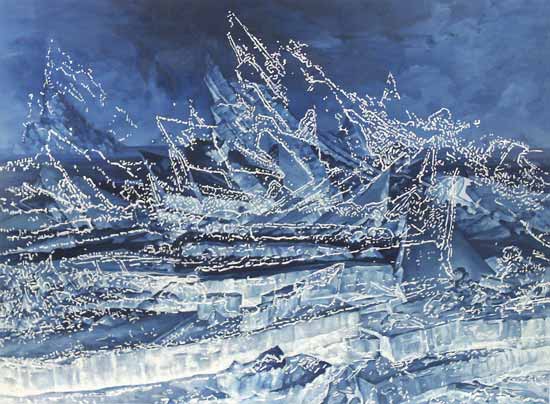 |
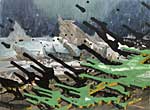 |
|
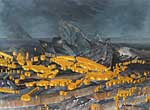 |
|
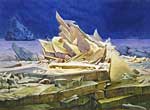 |
|
oil on canvas, 80" x 108"
To enlarge the images click on it. |
|
|
|
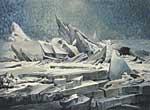 |
|
Home Again
In December 2001, after three years of a full renovation and a re-orientation of its purpose, the Alte Nationalgalerie (Old National Gallery) on the Museumsinsel in the heart of Berlin re-opened. It is a wonderful museum now, a celebration for the eyes in both its building and its collections. Each time we find ourselves in Berlin-Mitte we use the opportunity to stop by the museum, sometimes just for some moments, to enjoy this jewel box.
We have especially been drawn to the exhibition room of Caspar David Friedrich in one of the upper floors. We were surprised by the fact that the great German Romantic (1774-1840) suddenly had such a deep impact on our perception of art history. After having lived abroad for several years (in the United States and in Egypt), we found a new starting point in these German romantic paintings.
There exists a certain analogy between the Romantic era and the time we are now living in. At the time of C.D. Friedrich, the German lands were in a state of stagnation, filled with longing, everyone aware that the ideals of the French Revolution had not been established at all in these regions. There was a widespread desire for reform and renewal. But instead the situation went nowhere. Such a hope for a fundamental change in society is not unique to the time of C.D. Friedrich.
Friedrich's painting "Eismeer" ("The Sea of Ice," 1823-24, long in the Kunsthalle in Hamburg) has had an important effect on us: its depiction of the broken piles of ice on a frozen sea calls attention to the inability of change in the world of Friedrich's time. That is why we use it as a role model for the body of work you can see on this page.
That work is still in progress.
 |
|
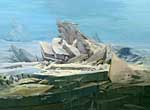 |
|
 |
|
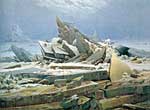 |
Caspar David Friedrich
"The Sea of Ice," 1823-24
created in Dresden, Saxony
oil on canvas, 38" x 50"
Hamburger Kunsthalle |
|
|
|
| young german art, yga, deutsche kunst, malerei, painting, berlin art, german art, german painting |
|
|
|
|
|
|
|
|











